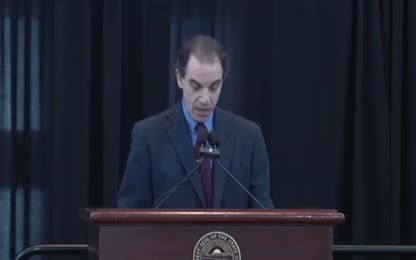Advertisement
An Elephant in the Hospital- Child Circumcision by Doctor R. McAllister-
Deaths from circumcision:
Over 100 baby boys die every year from circumcision: http://www.drmomma.org/2010/05/death-from-circumcision.html (A newborn baby is in a state of critical hemorrhage from a loss of just 1 ounce of blood.)
Another article that addresses that 100 babies die every year in the US from circumcision: http://www.icgi.org/2010/04/infant-circumcision-causes-100-deaths-each-year-in-us/
Circumcision: dirty little secrets exposed
Midwife Gloria Lemay’s notes on circumcision deaths- http://wisewomanwayofbirth.com/circumcision-dirty-little-secrets-exposed/
Circumcision is a tyrannical abuse of medical authority
To learn more see. https://circumcisionmovie.com/
*Circumcision, Mutilation, Bodily Integrity, Human Rights
BIO-PHYSICIST LECTURE - Elephant in the Hospital+
(http://goo.gl/ln7VPg) (http://goo.gl/JJeDJp)
Men Watch A Circumcision On Video And Their Reactions Are Intense
(https://www.youtube.com/watch?v=vPLJKeChBBA)
Doctor Ignorance of Male Anatomy Harms Boys
https://www.psychologytoday.com/blog/moral-landscapes/201110/doctor-ignorance-male-anatomy-harms-boys
I Researched Circumcision! ...Did You Really?
http://goo.gl/Z1iovZ
To the (Happily) Circumcised American Man
http://goo.gl/uHdQtn
Partners Speak UP (NSFW)
http://www.freeyourkidsblog.com/so-you-say-you-prefer-your-partner-to-be-circumcised-what-these-women-say-may-change-your-mind/
The American Academy of Pediatrics is guilty of withholding crucial information from the public - deliberately concealing the well-known structure and function of the foreskin. This vital information was once included in the AAP pamphlet, but was later deleted from subsequent editions without explanation. Ronald Goldman, Ph.D. inquired eight times to four AAP officials about this deletion, and concluded there was "no coherent explanation." You can read his correspondence with them at this link... http://www.circumcision.org/pamphlet.htm
The struggle for genital autonomy
and against the involuntary genital modification
of children of any sex https://www.circumstitions.com/
There are MANY reasons circumcision - particularly of minors - should be scrapped as the archaic and barbaric practice it is.
- Category: Uncategorized,Critical Thinking,Child Rape / Sexual Abuse,Unhealthy / Unnatural/Modified
- Duration: 33:33
- Date: 2020-10-24 20:21:03
- Tags: childabuse trauma mindcontrol slaveproduction
3 Comments
Video Transcript:
So I'm Ryan, a friend of Lizzie's, and I do biophysics research at Georgetown University, and I also coordinate two nonprofits that deal mostly with supporting families and supporting people in their relationships. Here's my family. So my mission in life basically is to help people get along, and towards that end I do a lot of workshops with families, and I also help families understand medical questions. So I'm going to talk with you about circumcision. I'm calling it the elephant in a hospital because it's this huge thing that happens as far as I see it in our culture, but we have very little discourse about it. It's performed between 500,000 and a million times each year in the US, almost entirely on infants within the first three days of life, and it's completely unnecessary, and I believe based on my research, it's entirely harmful to children. So what we're going to run through as quickly as I can is just a discussion of what that process is like from the child's point of view, what effects it has on adult survivors, what how we get parents to agree to it, what understanding parents have, and how we get practitioners to be performing it. So before we do that, I actually want to get a chance of what our room is like, and so we can see each other. So I'm going to ask you a few questions. I'm going to use this technology here for room assessment that goes back before clickers. What I'm going to ask you if you're willing is to point in a direction, as I ask you about each thing, from beneficial. So this wall is like the beneficial wall of neutral is the ceiling, and harmful is the wall over there. So for example, what do you think of foot binding? I mean, you're anthropologists. Most people probably heard of foot binding. Where do you think it goes? Okay, we have everyone who chose to respond says that they think it's harmful. Great. I'm pleased with that response. Female genital cutting. How many people heard of that? Okay, great. We've got universally harmful. Okay, what about, say we were to do prophylactic breast-bud removal. Say we wanted to stop breast cancer, save hundreds of thousands of women's lives per year, and we just cut all babies' breast-bud off. beneficial harmful neutral. Okay, some neutral and some harmful. And what about cutting off non-essential tissue from a child? Say we just cut off all kids' earlobes because we thought they were inconvenienced, clean or looked ugly. Okay, we've got harmful. Okay, so what about circumcision? What's our starting point? We've got every response. That's great. It's a diverse audience. Now a couple other questions. Just to see who we are, who here thinks that they have a foreskin? Anyone? Who here believes that they have a foreskin? This is that part that they removed during a circumcision, right? Okay, so that's a trick question. Men and women, males and females are both born with foreskins. The foreskin is just a name for a part of the clitoris or penis. And so probably most of the women here still have one and perhaps some of the males also. Who comes from a culture where a female genital cutting is a social norm? No one, okay. Who comes from a culture where a male genital cutting is a social norm? Okay, all of us, pretty much, that I can see. And who knows someone who is generally altered as a child? It could be you, it could be a friend, it could be your parent or child, most of us. Okay, great. So all that is just to illustrate how it's something that's touched all of our lives in some way. Now, so I'm arguing that it's this big thing and that we don't talk about it a lot. So I have to sort of explain why I think that. So I believe the discourse that we have in our culture about circumcision is one that's used to conceal what the nature of the process is. So you may have heard things like, well, it makes the penis cleaner or something like that. You may have heard things like, everyone does it. I'm circumcised and I'm fine. It's just a little snippery. It removes a useless flap of skin, the sort of trivializing language. We have heard all these things. What I'm asking you to do right now is to set all that aside, all that massive experience in your minds. And to try and come at it from a fresh angle where these sort of illogical arguments are support for it are not part of where you're thinking. I'm going to propose that circumcision is this cyclical process in our culture where we do it to children. They grow up. They become adult survivors. Some of those people become parents and they engage practitioners engage them in order to perform this surgery on their children, which unlike any other surgery I'm aware of in the US hospitals, it removes a healthy, unique organ part, actually with the exception of intersex genital modification, which it bears a lot of resemblance to in my mind. It removes a healthy part of the body. It's not used as a treatment. Doctors don't think they're treating the children. They know that it's a social surgery they're performing. It has significant complications. It's performed on minors who can't give consent. It's illegal. It's actually a federal felony to perform it on girls, but it's actually encouraged to perform on boys. It results in lifelong function loss and the tissue is then used commercially. So just a little context piece. I hear you believe me and I will show you evidence for that. I won't make such a radical claim without proving it. But let's just finish our context piece with both the geography and the history. So this is a map of the world sort of. And as you can see, green countries are places where genital cutting of boys is not practiced generally speaking. The small, the few yellow countries up in the northern regions are places where it's becoming legally questioned. The green decision is now rare in Canada, England, and Australia where it used to be practiced on babies also, but stopped in the 1950s after an article was published showing that it killed a number of children each year in England, about 14 a year in England. So they stopped the practice there. And the other place, besides the United States, where it's done on babies, the other regions, most of the time it's done on adolescents in sort of sub-Saharan Africa and in Islamic countries. Now, how do we get here? So it's become a medical practice rather than a tribal practice or a cultural practice. And that came about in the late 1800s when people had not the germ theory of disease, but the nervous excitation theory of disease. And they also had the Victorian morality. So people see what they expect to see a lot of the time. So you can find a lot of published medical literature showing that circumcision cured things like paralysis and epilepsy and hip joint disease and all sorts of problems that have no, that today seem very unlikely for the process to have cured. And people really thought that actually harming, the intention was to harm the genitals of children. And they thought that that would help them in the long term because it would prevent them from having so much sexual excitation that in the Victorian model being the most dangerous kind of nervous excitation you can have. So I should have given you a caveat, which is that I'm going to be some my apologies. They're going to be some graphic slides here and I certainly welcome you to turn away at any point if you don't feel comfortable looking at what you see. And I will try to more often give you a warning when you're about to come up. I would also mention actually in this sort of caveat piece that I'm going to use language perhaps differently. I'm going to switch now to mostly calling circumcision genital cutting because I think that's a more neutral term. It's a more accurate or descriptive term. I think circumcision embeds are, you've domestically embeds our assumption that it's a fine thing. And the term uncircumcised, I'm going to replace with the term intact because likewise the term uncircumcised gives the sense that circumcision is the norm and that those are not circumcised or simply not yet circumcised. And to illustrate that, it would be kind of weird if we called a woman who had breasts unmostectomised. That would be uncomfortable. And I think likewise, I hope to sensitize us to the discomfort of calling uncircumcised. So, the next few slides will have some less comfortable things to see. And again, you're welcome to turn away if you want. So this is the section on the child. The procedure for the child will run through what the procedure looks like. That's probably the most graphic section along with the complications. And what I want you to think about is, it's often times talked about from the parents perspective. You know, parents have a right to choose. I want you to question that discourse and think about what's the child's point of view? Who owns the child's body? What rights do they have? Why are we doing it to boys and not girls? What's that say about our view of gender and so on? So this slide shows three different representations of people in the genital cutting process. The top left is a young girl being circumcised in a culturally, in her cultural scenario. The top right is a young boy being circumcised in his cultural scenario. And the bottom right is a young infant boy in a hospital. Yes. And what I want you to do is look at their faces. Just look at their faces because I'm asking you to think about their experience. And to me, it looks like they're having a very similar experience. And yet in our culture, where I see us as being kind of imperialist, we're very ready to point the finger and say, oh, these terrible things, these people doing these other countries, where they practice female genital cutting, we're silent about the male genital cutting that occurs to children under the same conditions of hygiene and the same death rates in those countries. And we promote doing it to boys in this country. So how do we do a circumcision? The next bits are going to be the most graphic. This is a circumcision restraint. They strap the baby down to it. And then they proceed with the procedure, which I'm going to show you a short video of. This is going to include sound if I've hooked it up correctly. And again, you're welcome to not look at, I find this uncomfortable. Hi, so I want to encourage you to take a deep breath and having trouble breathing like I have during that. And some things I think to notice are the sort of calm detachment of the physician's voice. So the physician is not at all distressed by this. And the way the baby's crying, I hear the baby's crying as the way I hear baby's crying when they're in extreme duress. Not, you know, I'm hungry. So beyond the pain of the procedure itself and the pain of the many days it takes to heal, there are a number of complications that a circumcision procedure puts a child at risk for. You can sort of divide them into two categories. Surgical complications, which go from the more minor, you know, everyone has a scar who's been circumcised. A lot of men don't actually know that the ring around their penis is the circumcision scar, or they learn it when they hear my talk. But that always happens. But a number of other complications can be problematic that don't occur all the time. Like, a penal adhesion. When the healing process goes awry and two parts of the penis that weren't supposed to be connected linked together. And then these panels show in the top left A, that's called a fistula. So it's like a doctor-induced hypospatius. The black line going down is a probe that's entering the meadis, the opening of the rethra, and exiting out the additional hole that the physician has caused. And B is a nearly-imputated head of the penis. C, so much skin of the penis was removed that the child's corpus cavernosa and head of the penis are lodged down inside the scrotum. And indeed, the penis was accidentally amputated entirely. There are also a number of post-operative complications ranging from difficulty breastfeeding, which is important because breastfeeding is a very important, developing the ability of breast fees, very important for children. Bleeding, which is another sort of minimizing term. You see that on consent forms. And you're like, oh, bleeding. Well, it turns out an infant has 12 ounces of blood. So bleeding, a couple ounces, may actually cause that child to die or need a blood transfusion. Increase in pain response, infection, which is also very serious for a newborn. Meaditis, which is an irritation of the opening. And that also can be problematic because if it gets bad enough, the child won't be able to pee and that'll cause you to need catheterization. Necrosis and even permanent loss of the penis or death. I talked with a pediatric urologist. There's the people who get the complications to deal with. And he said in a two-year period, he had over 275 kids he had to treat almost half of whom required surgery. So they were subjected to an additional surgery in order to attempt to correct whatever it happened. OK, so that's most of the graphic stuff. Except for in the next few slides, we'll see some pictures of the actual anatomy of adults. So you're also welcome to turn your head aside at that. How many people have seen a penis that was intact? Either your own or a friend, you know? We'll go see if you can find, if you haven't yet, see if you can find someone who's willing to tell you. So I've talked with hundreds of men, you know, both men who've been circumcised and men who have not been circumcised. And I hear a lot of men who were circumcised feel upset about that. They're aware that something, or they've come to be aware that something was taken away from them and that their body was subjected to something without their choice. And also, parents talk about their regret from the procedure. So what is the foreskin? The foreskin is this sort of socially constructed thing. It's really just a part of the penis. But since we cut it off, now we need to give it a separate name. In fact, a lot of potential complications list that you get on your informed consent form say that one of the risks is that you might injure the penis. So we've actually constructed a reality or a view of reality in which cutting off part of the penis is not injuring it. It's only if you then cut the part that you had intended to leave, but it's an injury. So I want to show you what the foreskin is. I want to spend some time on that. The foreskin and adult male is the part that would have been removed is about 12 to 15 inches. It's the size of a 3x5 index card. It is the most erogenous part of a human male. It contains 10 to 20,000 fine touch nerve endings. And it also makes the penis shaft skin motile. So it's the difference when you're having intercourse or some kind of sexual interaction. It's the difference between this kind of interaction and something like if you can imagine a part of your body where the skin moves around nicely, my cheeks are floppy. So I can do that. And that's actually a significant thing because there's another kind of nerve called a stretcher receptor that gets stimulated during that motion. And it's the male's contribution to mechanical lubrication during intercourse. It's a major male or male female. The foreskin can be broken down in a couple specialized areas. The freinulum is this sort of, my hand isn't really long enough, but it's this standing out region here. And then there's the ridge band below it. That's where most of the nerves land. And the dartoist muscle is a cutaneous muscle that allows the foreskin to respond to cold or fear by surrounding the penis and pulling it in towards the body. In 2007, the first research ever was done to attempt to assess where the penis is sensitive. And so they took a group of males who were intact in a group of males who were circumcised. And what you see on this colored graph here, the most sensitive regions are that sort of maroon color and the second most sensitive regions are the purplish color. If we compare that to a circumcised penis, what you see is we removed, we've removed most of the most sensitive areas and left just this region around the scar and the remainder of the freinulum is really where most men who are sensitive. And so you can compare them this way. But you don't have to believe me if you can find a friend or two, maybe one who's circumcised and one is not. And then you can, or maybe yourself, you can look and see where the sensitivity actually lies. And for most men, it is in this region of the freinulum or the scar remnant. So just to get you a real picture, what John here has done, he's a photographer, he's taken a person with a foreskin and drawn these lines so that you can see how much tissue it is as it retract. And the other difference I want you to note is that the inside, what it does is it generally surrounds the penis. So in a sense it invaginates it, it gives it a closure and that keeps it moist. So if you compare that with the circumcised penis, there's a lot, the tissue looks softer, moisture and warmer. In addition, there being a lot more of it. And it doesn't have the scar. Those arrows there are pointing to the scar. So you can see where that is. Now I did want to invite, if you had any questions, it's okay to ask me as we go along because I'm giving you a lot of information. Okay, then jumping along to the parent. Like I said, I've talked with hundreds of parents also, especially doing all this work that I do with parents, I've talked with many who, when they receive their child back, that's the moment at which they understand what they had signed up for. And so there's a problem with informed consent, both that the information is lacking and that parents are sometimes asked about it at an inconvenient moment, like such as when they're in labour. And they're also asked about it in the sort of values neutral way. It's like, would you like a pillow, would you like a cup of tea, would you like your child circumcised? You know, it carries the same sort of tone. And I'm concerned about that. So I view us as having this sort of manufacturing pseudo informed consent process, where parents need to trust physicians. They're the people who are, the physicians are supposedly the ones who are bringing in the discipline of medicine. And so they come in, but they're given this information that is very cursory. It lacks real information about the complications. Those are trivialized. The four-skin functions are completely omitted. It's not mentioned that it's actually a sexual organ. And the ethical questions of making decisions about your children's bodies are omitted. And there's also this undeclared conflict of interest. There's really a lot of commercial use of the tissue. So the first thing parents, the other thing parents don't know is that it's painful for a week or longer afterwards. So the baby is not only in pain during the process, but this wound has to heal. It's a wound on the penis. And babies are very sensitive to pain. How many people have gotten to play with a baby who is newly, you know, they had a friend who had a baby or you had a baby a few days old? They're very fragile beings. And so what we've done is we've put this wound on this child. Now this new parent who's dealing with the healing process, the process of like figuring out what it's like to have this new baby also has this added complication. They have to watch for signs of infection. They have to keep changing the bandage and their babies more upset than he would have been. In comparison, the child's not circumcised. All you have to do is, well, almost nothing. In fact, you don't even watch the penis. Just like you wouldn't wash your babies with gin and soap, you just rinse it. You don't retract it. You don't. It becomes retractable on its own. And you have a baby with fewer health problems and who is more content. Now I promised you that I would show that we actually do use the foreskin tissue. We use it for three things that I've been able to find. We use it for research. So there's a large number of products you can buy from Invitrogen, which actually accompany eye by other things that don't contain foreskin cells from my bout physics research. And you can buy, so there are some of the product codes. You can go look it up yourself. They really sell things taken from neonatal foreskins. You can buy, well, at a hospital you can get magic skin treatment, which has grown up foreskin tissue. And if you're very wealthy, you can buy cosmetics that are also derived from neonatal foreskins. Other cosmetics? Wait, say louder? People think it'll make you less wrinkly. If you have the idea is baby cells, they're young, they do their job well. And if you're disturbed by that, I'm glad because I would like us to be disturbed by it. So let's hear from an obstetrician how they frame these sort of things. This is Lisa Masterson being interviewed on the Craig Ferguson late show. Yeah, and again, you know that's a personal choice. And I talk to my patients as an obstetrician. I talk to my patients a lot about this. And really there's a lot of health benefits and some risk benefits, but it's really a social procedure. So you really have to decide, do you want your son to look like you? Do you, you know, is it a cultural thing? Is it a social thing? It's absolutely. And there's some health benefits more for the lady than the man, but as far as decreasing STDs and passing on to, you know, other women, HPV, which can cause cervical cancer. So decreasing STDs and cancers, all I could say. But couldn't you achieve the same effect by washing your peepee on a regular basis? You absolutely could. And we... So we're talking, you can have this chopped off or you can wash it. You're called. Exactly. That's a tough choice there. Oh, no. So obviously I appreciate Craig's point of view there. Now he's from Scotland. Craig, coincidentally, they don't do this to children. And so, but think about her discourse. She's saying, you have to choose as a parent. It's like this. And I want to question that framing of it. Like, do you have to choose other body modification options for your child? Like a nose job or things like that? And if the idea of, you know, doing things to our children because we want them to look a certain way, chills you, I'm glad. I want it to chill us. I want us to wonder, why are we so busy making our children look like what we think boys and girls should look like? In this case, we have this idea of boys should look a certain way in their genitals. Okay. So the last action is, how do we get practitioners doing this? So I have a few quotes here from practitioners who stop doing it, like Marilyn Milos and Nurse, who, after seeing it, refused to assist with them and was fired for telling parents they don't need to do it. Michelle Storms, who is a very well-known obstetrician, who said she was ridiculed and patronized after stopping them in 1988. And I'm at Georgetown, so I went and talked to the head of obstetrics at Georgetown University Hospital. Obstetitions do most of them. And she says medically it doesn't make sense. I don't even like doing the procedure, but I do it well. I perform thousands of circumcisions. She was clear that it's a social procedure. She was clear that it doesn't make sense medically. And she told me in our conversation that she would not stop doing them. So how do we make physicians into that? Well, first we start by pathologizing a healthy organ. Not only are, is the force can absent from most US medical and anatomy texts. There's no, there's therefore no education about the functions. It's not spoken of as a sexually important organ. Those are only taught how to remove it as a procedure. And they're mistot care. They're mistot this retract and wash philosophy, which is problematic because as you can see down at the bottom, the foreskin, when you're born, is usually attached to the head of the penis. What you saw early in the circumcision video was the physician running this tool around to scrape the foreskin loose so they could cut it off. It's bonded like that to protect babies from all the sorts of things that babies do. You know, they might have feces or urine and they're diaper. They might get scratched up. So the foreskin has this protective function when you're young. Gradually that detaches and the foreskin becomes retractable. But if you forcibly retract it, that tears it up and creates a site for infection. Also if you wash with soap, that creates a site for infection. And finally we make this misdiagnosis called fimosis. There's a true problem called fimosis, which is when there's scar tissue at the opening of the foreskin so it can't retract. And their treatments for it, using stroidal cream, to help the scar tissue soften. But when we think that a baby who's three weeks old has fimosis because you can't pull the foreskin back without making the baby scream, that's wrong. It's actually meant to be attached that way, it grew that way, and it will become retracted on its own. So why do we do the circumcisions? Well, if you look at why parents say they're choose, the number one reason is appearance. They want their child to look like the other children they'll see or they want them to look like their dad. Or they think it looks better. Or they think it's easier to clean. And I believe that this solicitation by physicians reinforces or validates the choice to do this. You know, would you like your child's circumcise? The fact that physicians do it makes it look like a reasonable thing. Physicians may also give several reasons to sort of collude with this idea. They may say that it reduces penal cancer rates, that it reduces urinary tract infections, cervical cancer rates in female partners that your child might have when they grow up, and female to male HIV transmission rate reduction is sort of the newest reason. So as I showed you in the beginning, we have this sort of cultural baggage. We have lots of reasons that we used to do circumcisions that don't make sense in today's cultural setting. So we've had to come up with a posteriori reasons in order to feel comfortable with what we're doing. But I'll analyze those in more depth. Besides the social critique that I think there are reasons we made up after the fact in order to feel comfortable with it, if we think about them carefully, appearance and cleanliness, the number one reason that circumcision is done. Well, that argument is used to support both male and female genital cutting in every culture that I'm aware of that either of those practices occurs in. And they're just made up arguments. I mean, how can you say that something's cleaner if you do one thing to it or another? Penal cancer. The American Cancer Society says no, it won't protect you from penal cancer. And it's also irrelevant. The rate is about one in 100,000. More people may die from circumcision than penal cancer. Urinary tract infections. Well, that was based on a big study in 1986, done by a fellow I kid you not, his name was Wizwell. And the problem was his instructions cause urinary tract infections, selectively in people with foreskins because he told parents to retract the foreskin and wash with soap. So that's just like if you had a girl and you forcibly dooster, you would, you know, a little girl, you would get a higher rate of yeast in urinary tract infections because you've messed up the colonies of protective bacteria. Surveillance cancer in female partners. Well, first of all, a surgical prevent, preventive measure on an infant for a potential female partner when they grow up. I mean, how do we know this person's not going to be a monk or gay or, you know, they could do it themselves later. But also, cervical cancer is caused by a human papaloma virus. Probably, most of you guys know that, you learn that in sex ed, right? Well, the same authors did, went back and looked at the husbands and wives in that study and they had different strains of HPV. So I don't know if there was, you know, under the table nonmenopathy going on or what, but that throws the result of that study entirely in question because the husbands weren't carrying the HIV HPV strain that gave the women cervical cancer. Because in time. Okay. So the last one, circumcision is HIV preventative. That idea started in the 2000s, mostly. And the evidence for it is three randomized control trials that were performed in Africa, probably because you couldn't get a human review board to permit such a study in the US. They got volunteer men who were willing to be circumcised, they randomly circumcised half of them and they just watched to see how quickly they got HIV. And I had some problematic methodology that I'll get into later. And their claim was that that reduced the rate that the men acquired HIV by 60%. Now the evidence against circumcision as an HIV preventative are pretty much all the other studies that have been done. The geographic data, you know, if you look at correlations between circumcision percentage and HIV rates in populations, it contradicts this conclusion. For example, the United States has the highest HIV rate of any industrialized nation and also has the highest circumcision rate of any industrialized nation. You would expect something different if circumcision was so protective. So I've got a few minutes left. I'll quickly run through what I think was wrong with the study. So the three studies, again, they took a group of men, the circumcised half of them and watched how quickly they got HIV. The problems were, each time that people came to the clinic, they gave them condoms and safe sex counseling. But the circumcised group came at least twice more because they had to come to get circumcised and they had to come to get a follow-up study. In addition, if you're circumcised, it takes four to six weeks until you're able to have sex again. And the circumcised group was axed to abstain for six weeks. But they didn't start the clock after waiting six weeks. They started the clock at the beginning. So the circumcised group had six weeks of protection by being unable to have intercourse. In addition, they used an antibody test, which, you know, if you go to an STD clinic and they used an antibody test, they tell you there's a three-month window. You've got to wait till three months after your last exposure, if you really want to know if you've got HIV. But again, they didn't start the clock after three months. And most of the benefit or half the benefit occurred during that first three months. So those infections occurred prior to the start of the trial, prior to the randomization and intervention. There were other problems too, a lot of missed controls, including blood exposure and receptive anal intercourse. I'm also concerned because this authors of those studies liken circumcision to an effective vaccine. Now, all they're saying is that if their results are accurate, which I don't believe, that it would reduce your likelihood of getting HIV, you know, each time you had sex by 60%. So if you have sex enough, you'll get HIV anyway, enough risky behaviour. The measles vaccine, if you take that in its boosters, 99% of you would become immune to measles, probably you are actually. So that's what an effective vaccine looks like. 99% permanent immunity, not 60% less likelihood to get it each time you take it. And real human beings think that they're immune to HIV because they've been circumcised in African countries. And I think that's very concerned about that. But anyway, so the recap, I think we have a social bias towards cutting children, particularly boys. I think that it's very harmful to children. It also hurts survivors. It hurts parents who really want the best for their children. And it also hurts practitioners because I believe that medical students come into school wanting to help people and they get taught about this procedure in an out of context kind of way. Most of the people I talk to think it's not their responsibility to do anything about it, including professional organisations like the American Academy of Pediatrics, the American College of Obstetricians and Gynecologists, the practitioners, you know, because their job is to keep practitioners looking good. So if you go again, you say that something's bad that your practitioners are doing, that doesn't look so good. The administrators of hospitals and the practitioners there don't want to stand out. Obstetricians don't even think the child they're operating on as their patient. The ethics committee at the hospital told me that they're not the appropriate venue for this concern. And I think all of these organisations are neglecting parents, children and us. So I'm hopeful that I've engaged you with some interest and that maybe you'll go and tell people about this, is if they're not going to take responsibility, I hope that we will. So tell your friends, I'm going to give this slide show, a link to the slide show to your professors.










 Donate
Donate







